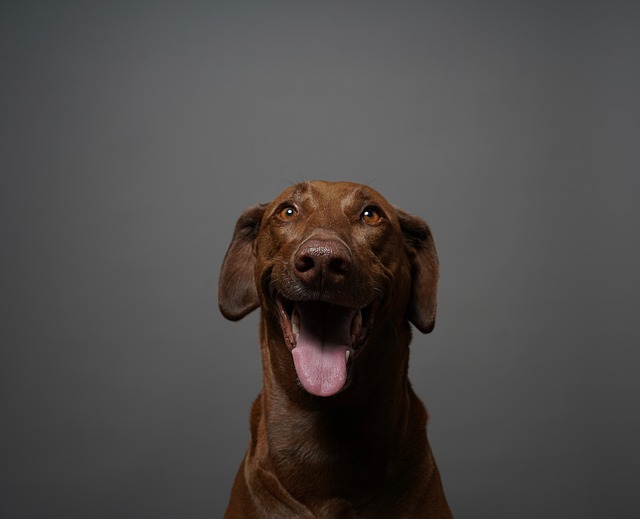
What is glaucoma in a dog?
You might notice your dog squinting more at mealtime or avoiding bright sunlight—these small changes could be early signs of a serious eye condition.
That telltale whiff when your dog nuzzles your face—sometimes it’s just “dog breath,” but other times, it’s a red flag. If it smells sharp, almost metallic, or gets worse over time, chances are good you’re dealing with the problem vets see more than any other: periodontal disease. It starts small, often without much fanfare, but left unchecked, it can turn into something that hurts your pup and even affects their overall health.
Here’s how it usually begins: tiny bits of food get stuck between teeth and along the gums, mixing with bacteria to form plaque. Within days, that plaque hardens into tartar—a crusty, yellowish layer you might notice along the gumline. At first, your dog might not act differently, but as the tartar builds up, it irritates the gums, making them red, swollen, or even bleed when you brush. That’s gingivitis, the early stage of periodontal disease. Most dogs show signs of it by age three, especially if they’re not getting regular dental care.
What makes this so easy to miss? Dogs are pros at hiding discomfort. They won’t whine when chewing kibble or yelp when you pet their muzzle, even if their gums are sore. But over time, the inflammation spreads below the gumline, attacking the tissues and bones that hold teeth in place. You might start noticing loose teeth, a loss of appetite, or even weight loss as eating becomes painful. In severe cases, bacteria from the mouth can enter the bloodstream, affecting organs like the heart or kidneys—that’s why vets call dental health a window to your dog’s overall well-being.
 Part of the problem is that many owners don’t realize how much daily care matters. Brushing a dog’s teeth sounds like a hassle, but it’s the best way to stop plaque in its tracks. Start slow: use a toothbrush made for dogs (or a finger brush) and pet-safe toothpaste—never the human kind, which can make them sick. Let them lick the paste first to get used to the taste, then gently brush a few teeth at a time. Over weeks, they’ll learn to tolerate it, and you’ll both get faster at it.
Part of the problem is that many owners don’t realize how much daily care matters. Brushing a dog’s teeth sounds like a hassle, but it’s the best way to stop plaque in its tracks. Start slow: use a toothbrush made for dogs (or a finger brush) and pet-safe toothpaste—never the human kind, which can make them sick. Let them lick the paste first to get used to the taste, then gently brush a few teeth at a time. Over weeks, they’ll learn to tolerate it, and you’ll both get faster at it.
Dental chews and special toys can help, too, but they’re not a replacement for brushing. Look for products approved by veterinary dental associations—they’re designed to scrub teeth as your dog chews, reducing plaque buildup. Crunchy kibble might also play a small role; its texture can scrape off some surface plaque, though wet food alone can leave more residue. Mixing the two? That’s fine, as long as you’re still sticking to a regular dental routine.
It’s also worth checking in with your vet during annual exams. Many clinics offer dental cleanings under anesthesia, where they scrape away tartar, polish teeth, and check for hidden issues below the gums. Some local regulations even emphasize routine pet care as part of responsible ownership, and dental health falls right into that category. Skipping these checkups can let small problems turn into big, expensive ones—and no one wants their dog to suffer needlessly.
The good news is that periodontal disease is preventable with a little effort. A quick brush a few times a week, regular chews, and yearly vet visits can keep those teeth and gums healthy. Your dog will thank you with brighter eyes during mealtime, fresher breath during snuggle sessions, and the energy to chomp on their favorite toy for years to come. After all, a happy dog is one with a healthy mouth.

You might notice your dog squinting more at mealtime or avoiding bright sunlight—these small changes could be early signs of a serious eye condition.

Let’s set the scene: It’s a sweltering Phoenix afternoon—105°F outside—and you rushed your 2-year-old Lab mix, Cooper, on a quick walk to “get it over with.”

Let’s get real: You’re in your Miami apartment, watching your 3-year-old Corgi, Loki, struggle to climb the stairs to your second-floor unit.

Many dog owners brush off occasional scratching as just “dog behavior,” but persistent itching often signals something more—like a food allergy.

You might first notice your dog scratching more than usual—chewing at their paws until the fur looks thin, or rubbing their face against the couch nonstop.

Let’s be real: You’re standing in your Chicago apartment, watching your 3-year-old Beagle, Max, huff and puff just to climb onto the couch.